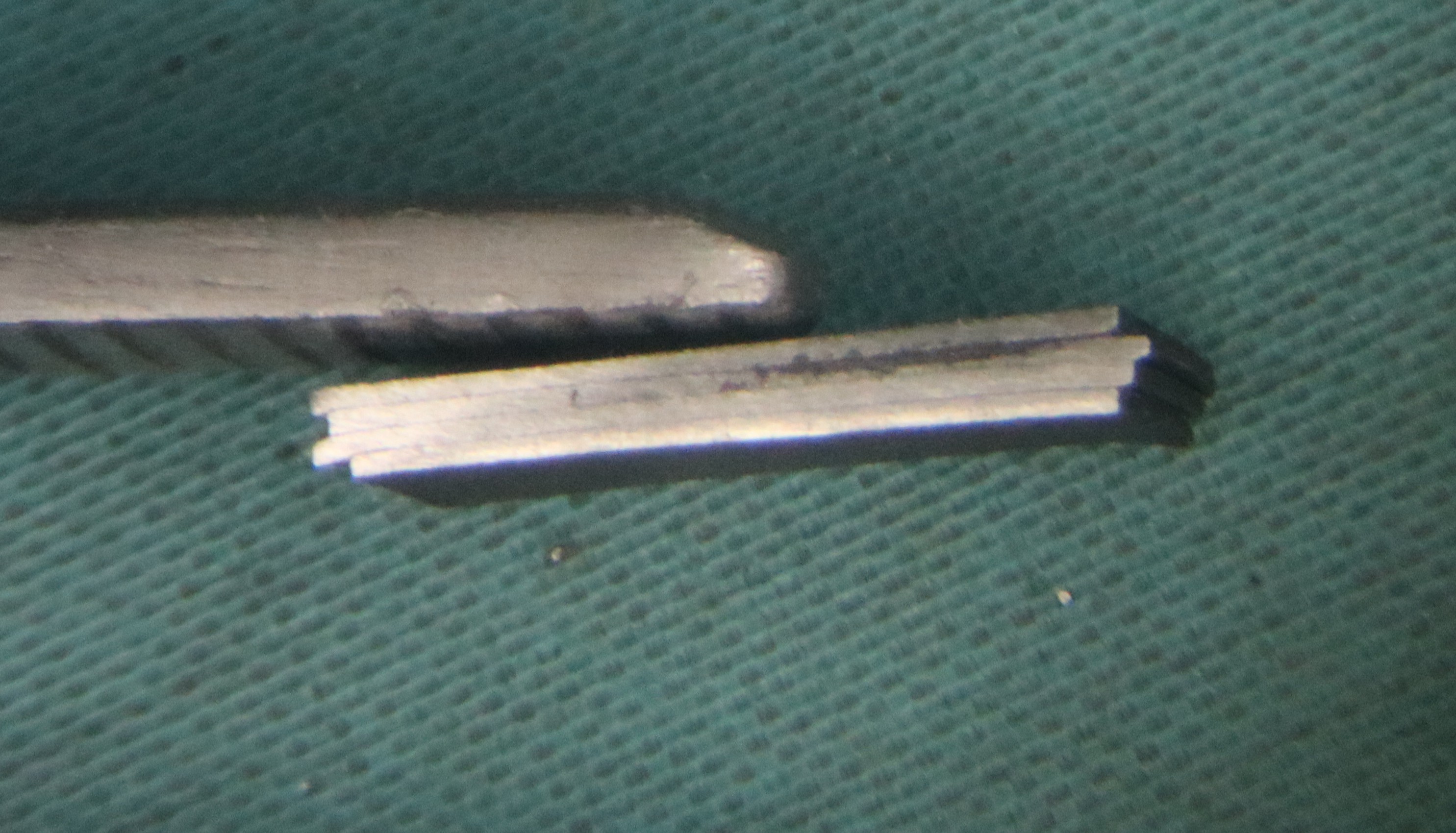-
1Prepare the Solvent Bath
To make the bismuth coating solution for the magnesium
Mix about 0.07 grams of BiCl3 with about 5 ml of isopropyl alcohol. This is past the solubility limit, but the excess helps replenish the solution as the magnesium reacts. The drier the alcohol, the better. I used 99.9% isopropyl from the hydroponics store. I haven't tried it with alcohol azeotropes yet, but it might still work.
You In case you have any trouble finding it, you can make BiCl3 from pepto bismol or similar products by:
- Burning the material to get bismuth oxide. This will typically contain impurities of cacium and magnesium oxides, sulfates or carbonates
- Dissolving the material with HCl, then precipitating bismuth oxychloride by neutralizing with NaOH. The magnesium and calcium salts will stay dissolved, while the bismuth precipitates.
- Filtering and rinsing the bismuth oxychloride, or letting it settle and decanting the water, replacing with DI water a few times.
- Once you have rinsed and dried BiOCl, re-dissolve it in as little as possible concentrated HCl, then evaporate off the resulting water and you have your clean BiCl3.
You could in principle dissolve bismuth with HCl directly, but I found that even with powdered
-
2Prepare the magnesium
- Make sure your magnesium surface is fresh and minimally oxidized. If necessary, sand the surface, but make sure to use a fine grit so that the magnesium surfaces are not too uneven to bond. Be very careful with magnesium dust! For tiny amounts it is probably fine to throw it in water to be oxidized, but if you have a lot of magnesium powder, that can be quite dangerous.
- Isopropyl alcohol should remove all oils from the surface, but best to use gloves and avoid solvents like limonene, which can inhibit attack by bismuth chloride.
-
3Soak the magnesium
- Place your prepared magnesium pieces in the isopropyl alcohol bath to soak. you may want to stir or manually agitate the pieces to help ensure an even coating. We generally let the pieces soak for about 30 seconds - longer and the bismuth can get too thick and flaky to adhere.
-
4Consolidate the laminate
There are two ways to consolidate the laminate. Perhaps the easiest way is to emulate brazing. to do this:
- Clamp the pieces together. Clamps with teeth can mar the surfaces of the composite, so if you can find one with flat clamping surfaces, that is preferable. Higher clamping forces generally seem to improve the interlayer bonding more than higher temperatures do - in fact temperatures that are too high are detrimental.
- Blow torch the composite: I found with my clamp setup and a standard butane torch, optimal interlayer bonding seemed to take just 8 seconds in the flame - more than that caused too much oxidation.
- Let it cool, and remove. Generally I've found that the bismuth-coated surfaces bond to each other well, but not with unprepared metal surfaces that probably still have traces of machining oil, but you may want to put some MR97 boron nitride mold release on your clamp just to be on the safe side.
And there you have it! Take your sample and section it for microscopy, or prepare it for other applications. Under normal microscopy, it is just barely possible to make out the Bi:Mg interfaces.
The other way is with an impact tester, simulating cold spray technology to consolidate the metal at room temperature. In theory, this is the best way to go, but in practice, it has been bit more tricky, so we will address the specifics of that process in a project log here.
Bi-Mg Laminates
We demonstrate that Art's Parts, recieved at Coast to Coast Radio, are in fact easy to reproduce with human technology
 Michael Perrone
Michael Perrone
Discussions
Become a Hackaday.io Member
Create an account to leave a comment. Already have an account? Log In.